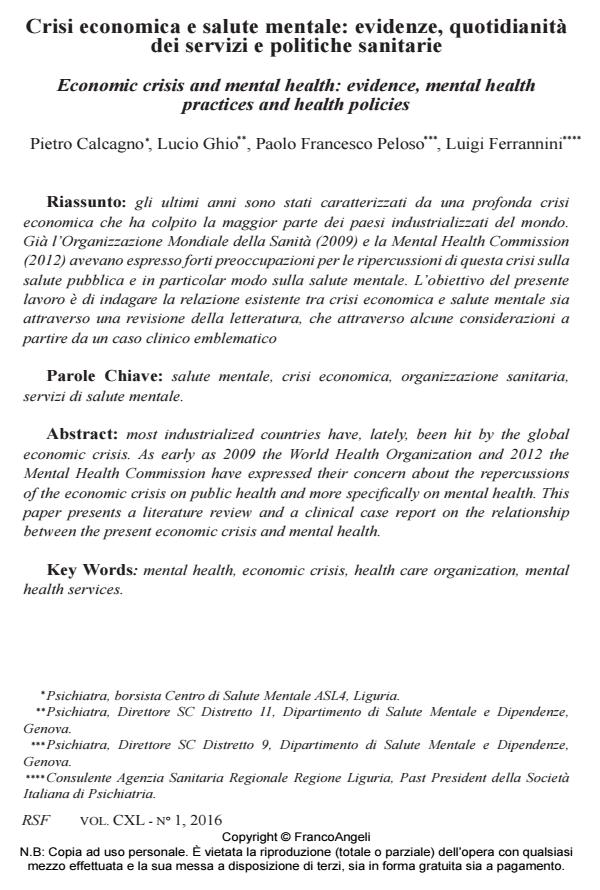Crisi economica e salute mentale: evidenze, quotidianità dei servizi e politiche sanitarie
Titolo Rivista RIVISTA SPERIMENTALE DI FRENIATRIA
Autori/Curatori Pietro Calcagno, Lucio Ghio, Paolo Francesco Peloso, Luigi Ferrannini
Anno di pubblicazione 2016 Fascicolo 2016/1
Lingua Italiano Numero pagine 29 P. 13-41 Dimensione file 1744 KB
DOI 10.3280/RSF2016-001002
Il DOI è il codice a barre della proprietà intellettuale: per saperne di più
clicca qui
Qui sotto puoi vedere in anteprima la prima pagina di questo articolo.
Se questo articolo ti interessa, lo puoi acquistare (e scaricare in formato pdf) seguendo le facili indicazioni per acquistare il download credit. Acquista Download Credits per scaricare questo Articolo in formato PDF

FrancoAngeli è membro della Publishers International Linking Association, Inc (PILA)associazione indipendente e non profit per facilitare (attraverso i servizi tecnologici implementati da CrossRef.org) l’accesso degli studiosi ai contenuti digitali nelle pubblicazioni professionali e scientifiche
gli ultimi anni sono stati caratterizzati da una profonda crisi economica che ha colpito la maggior parte dei paesi industrializzati del mondo. Già l’Organizzazione Mondiale della Sanità (2009) e la Mental Health Commission (2012) avevano espresso forti preoccupazioni per le ripercussioni di questa crisi sulla salute pubblica e in particolar modo sulla salute mentale. L’obiettivo del presente lavoro è di indagare la relazione esistente tra crisi economica e salute mentale sia attraverso una revisione della letteratura, che attraverso alcune considerazioni a partire da un caso clinico emblematico
Parole chiave:Salute mentale, crisi economica, organizzazione sanitaria, servizi di salute mentale
Pietro Calcagno, Lucio Ghio, Paolo Francesco Peloso, Luigi Ferrannini, Crisi economica e salute mentale: evidenze, quotidianità dei servizi e politiche sanitarie in "RIVISTA SPERIMENTALE DI FRENIATRIA" 1/2016, pp 13-41, DOI: 10.3280/RSF2016-001002